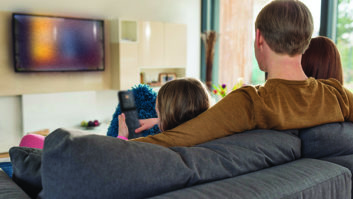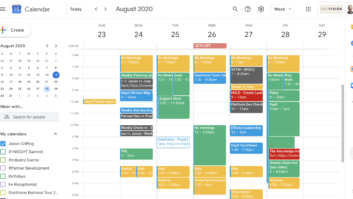Custom installation has long been a touchscreen-centric business. Handheld remote controls have always been available for smaller projects, but they were limited in their ability to handle much beyond a basic TV, components, and surround set up.
In recent years, however, the manufacturers of the these devices have blurred the line between the capabilities of handheld remote controls and touchscreen control panels by adding LCD screens, RF capabilities, and more sophisticated, yet uncomplicated, programming capabilities.
Controlling Local Sources
For veteran remote control manufacturers, such Universal Remote Control, product innovation is often driven by specific applications needs of the companys dealers in the field.
For the custom installer, I think the number one thing is that they need two distinctly different kinds of controls. They need control for a multi-room system, and they need control for one room that can be programmed very quickly by anyone in their organization, said URCs VP of technology, Eric Johnson. The big hang up with multi-room control systems in the mid-price range is that the keypads and remote controls are designed to control a central system that is usually located in the basement. And that really leaves out the plasma and possibly some local devices that a customer might have in a room.
Johnson pointed out that with a multi-room control system, keypads and control systems cannot easily operate local systems without extensive re-wiring of the house. That situation creates a need for a semi-intelligent programmable device that can integrate the multi-room system, music system, and the local TV, cable box, satellite receiver, and DVD player.
That was the motivation behind URCs MX-810. Featuring a flashy color LCD screen, the new remote control can be programmed very quickly via the companys Pro Wizard software for one-room locations that arent connected to a multi-room system, yet can also easily integrate with other automation systems as well.
They are really two different aspects to the custom installers job, Johnson said, We need to be able send our finish installers out and get these rooms around the house finished, but we also need to be able to provide enhanced control for a location where theres more happening, different kinds of people using it, more complexity to the system and this ability for the custom installer to really customize and make it unique for that particular family and do it with software thats very much more editor-based.
Harmonys Influence
One of the pioneers of Wizard-based programming of handheld remote controls is Harmony Remote, which is now owned by computer accessories powerhouse, Logitech. The Harmony remote was one of the first to develop a giant database of IR codes with a simple Internet programming Wizard to set up its LCD-screen remotes. Much like URCs offerings, Harmonys programming Wizard guides the installer in selecting operating instructions for any combination of components, in part through access to a huge library of professional control codes. Afterward, installers can archive their programming by accessing a dedicated web page.
Ashish Arora, vice president and general manager for the remote controls unit of Logitechs Harmony division, pointed out that his companys online database now supports more than 5,000 manufacturers and more than 200,000 devices. Thats a big sales advantage, but for Harmony, its more than that, according to Arora. Our value proposition is really about enabling an activity-based experience for the end user, he said. Its not simply about controlling devices, but instead about enabling the end user to do what they want to do with their entertainment experience, such as Watch TV, Listen to Music, or Watch DVD.
Harmony is not about to rest on its laurels. Recent product developments have included the addition of RF-controlled, rechargeable handheld (Harmony 890), and a touchscreen, two-hand version of its remote control for a larger feature set (Harmony 1000). Looking forward, Arora said the company has even commissioned focus groups and psychological research to help better understand what people want to do within their entertainment experience and how to help them achieve it more efficiently.
List of Devices Grows
One of the biggest factors influencing manufacturers of handheld universal remote controls is the explosion in the number of devices in the home and media content in the home. Digital media has become mainstream, having moved beyond music and now into video content, and it seems that every day theres a new box to do something else cool in the home.
You have YouTube, Joost and other companies out there launching online video content to the home, and from a control perspective theres more going on in the home than ever before, said Universal Electronics Inc.s vice president of product development, Ramzi Ammari. There is a need for the consumer to have a device that will allow them to interact more easily and seamlessly between all of the media and devices within the home.
Ammari has also noticed the growing influence of RF-controlled devices in the home. RF, and its various incarnations, help integrators and consumers to control many devices that arent necessarily in the same location or when you have boxes that are connected to your PC and AV equipment thats hidden in cabinets.
I think that RF has become much more prominent than in the past and then within RF you have a large portfolio of options that companies are looking at, Ammari said. Clearly WiFi is a very fast pipe in terms of delivering data and control but its becoming very prevalent in the home as well, he noted.
When UEIs Nevo remote control launched a couple years ago, WiFi was the protocol that the company chose to leverage in the home. Thats been very successful for us in terms of bringing the PC and the content on the PC into the mainstream media, Ammari added. Since then weve also been involved with a lot of other RF technologies.
For example, in an OEM project for Sirius satellite radio, UEI designed a Z-Wave-enabled remote control with a three-line display on front that would receive artist, song, and channel metadata from the satellite service. That level of sophistication in remote controls that didnt exist a few years back, though it has found its way into Niles Audio ICS remote and some others, including another OEM project from UEI.
Most recently weve announced implementation on a similar product from Denon using a competing standard [to Z-wave] called Zigbee, Ammari said. Again, the idea is RF so you can control all of your devices hidden or in other rooms, but also you can bring content and put it on the display of the remote control.
UEI is using Zigbee to display metadata that is coming from a Denon media server-type box that sits connected to an amplifier. Initially RF resolved the line-of-sight issue but the secondary benefit is being able to use two-way RF to bring content and display it on the remote control screen. The Denon remote is a five-line, much larger monochrome display. Denons programming allows the consumer to select the device, select the brand, and customize the universal remote control using a very simple PC-driven application.
All of this ease of programming for the end user brings up a key point for remote control manufacturers selling into custom installation. How do you make your programming simple enough for anyone in the organization to do, yet avoid selling out the installation communitys livelihood?
The installer wants to make sure theres value in the fee they charge for setting up and programming a remote control, Ammari said. Theres that fine line of making it easy on the installer but not too easy so the consumer says they will do it themselves. Nevo is powerful for the installer yet easy for the average consumer to use. Its kind of like the sophisticated editing software tool you get when you buy a camera vs. the very basic applications that allow you to rotate a picture or crop it with very basic tools. Its iPhoto vs. Adobe Photo Illustrator.
Installers Step It Up
Peter Baker, RTIs vice president of marketing, noted that all the while programming of advanced remote controls has been simplified, the level of control that is being offered by the professional installation community is also increasing. He said that it is becoming more critical for installers to offer more advanced control, more automation in the system and have features like centrally stored macros and IR commands, having an RF system rather than just an IR based system, offering RS232 controlwhether its one way or two way and having device or system status management knowing whether a device is on or off and responding accordingly.
When its all said and done, the remote control is the system for the customer, Baker said. Lets say your customer is on a trip and your wife hits the On button, and the system doesnt work. Shes going to call you and say, This system stinks; I cant even turn it on. Now it may be that someone just hit the main shut-off button on your surge protection system, but as far shes concerned, shes hitting a button on the remote control and nothing is happening.
To that point, Baker said, systems integrators have a lot invested in the success of the control system, are more focused on it and making sure that it is as reliable, powerful, and offers as much automation as possible.
I think the bar is being raised for remote control systems by everyone involved in the process, Baker added. We as a manufacturer need to be doing a better job with industrial design, offering more advanced control solutions, while making the programming process very efficient. The user interfaces need to be more advanced, more elegant and more efficient to program. Dealers are also raising their bar by offering a higher level of automation for their customers through these remote controls. And consumers are expecting more elegant solutions and automation on par with their entertainment system.
Jeremy J. Glowacki is editorial director of New York-based Residential Systems.





